Trying to master cosmic rays
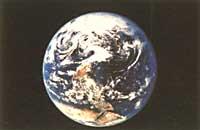
XX. At the beginning of the 20th century, scientists announced that there was a stronger radiation than had previously been detected. Physicists generally concluded the new radiation produced by radioactive substances on the Earth's surface. With the aim of not fully agreeing with Victor Franz Hess and knowing the origin of the radiation, in 1910 he put his apparatus into a balloon and rose along the atmosphere to 6,000 m, observing that as the intensity of the new radiation rose higher. After several attempts he concluded that radiation was not the origin of the Earth's surface and suggested that the Earth came from outer space.
V.F. during the next few years Hess's results were confirmed, demonstrating that it was a radiation from the non-terrestrial universe. Therefore, Robert A. In 1925 Millikan called this unknown cosmic radiation lightning or cosmic radiation.
Later it was proposed to know the nature of cosmic rays. But in this task the physicists encountered two problems, among others. On the one hand, when cosmic rays reach the ground they collide against the nuclei and molecules of the atmosphere and more particles form. Some of them, as they descend to the surface of the Earth, disintegrate and others, on the contrary, suffer more shocks causing more types of particles.
Collisions and disintegration products (secondary radiation) and not original cosmic radiation (primary radiation) would therefore be detected on the Earth's surface. Therefore, if you want to make a direct observation, you should send balloons, rockets or artificial satellites to the high atmosphere or install laboratories on the mountain tops. For this, the truth is that in 1910 Victor Hess did not have the right technology and it took several years for physicists, through the right technology, to determine the nature of cosmic radiation.
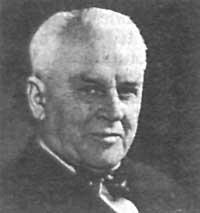
On the other hand, physicists faced another problem: the low intensity of cosmic radiation and the need for good detectors to obtain information. Remember that the detectors used today, as we will see below, are dispersed by a circle of several meters of land surface.
Therefore, scientists used indirect methods. On the surface of the Earth and in the summits of the mountains tools were installed to detect secondary products and analyze their nature (energy, mass, speed, quantity,...), being able to know of the results obtained the characteristics of the primary radiation. Meteorites also got a lot of information.
When meteorites move through space they suffer the influence of cosmic rays. Some particles produce radioactive effects and others produce ionization processes. Chemical methods analyze these effects and obtain information about cosmic rays.
Thus, two theories were published. Robert A. For Millikan cosmic radiation was formed by photons of greater energy than all photons that had been detected until then. But he could not prove it. Holly A. The American physicist Compton believes that cosmic rays were charged particles and found that the intensity increased according to latitude from the tests carried out on the different sides of the Earth, that is, that in the equator was weaker than in the poles, as one could expect charged particles.
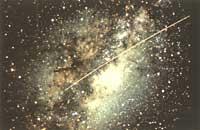
In 1935 Bruno Rossi, based on the deviations suffered by cosmic rays under the influence of the Earth's magnetic field, demonstrated that cosmic rays were formed by positively charged particles. In any case, physicists wanted to know what kind of cosmic radiation the particles formed and, as has been said, in the late 1930s, when the proper apparatus was obtained, they reached 21 km of height, leaving behind 97% of the atmosphere. These investigations made it possible to know the composition of cosmic rays: 77% of the primary radiation was formed by protons and the rest was formed by nuclei of elements of uranium helium (the heavier the nuclei), electrons, gamma rays and neutrinos. They moved at the speed of light and had enormous energy, between 10 5 and 10 10 10 eV.
Subsequently, the creation and development of secondary radiation through the atmosphere was studied. When a nucleus of primary cosmic radiation collides with a nucleus of oxygen and atmospheric nitrogen at a height of 20 km, a number of particles called pions, gamma rays and nuclear fragments occur. The number of pions generated and the number of parts of the nucleus depend on the energy of the primary radiation, that is, more energy from the primary cosmic rays, more pions and more parts of the nucleus. These pieces of nucleus and pions (secondary radiation) suffer more shocks against atmospheric nuclei, causing more cores and more pions (tertiary radiation).
These will suffer more collisions and thus a leap of particles will occur as a result of this multiplier process. If the energy of cosmic rays is high, this particle jump will have many particles and its width will be several kilometers. Three types of pions: +, - and 0 The most unstable is the neutral pion and quickly disintegrates forming high energy photons. Because of their enormous energy they produce pairs of positron electrons. On the contrary, positive and negative pions adopt a different behavior depending on the energy they contain.
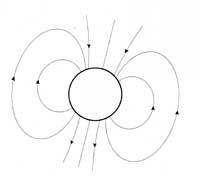
If they are of moderate energy, after traveling several meters they disintegrate forming muons and neutrinos. On the contrary, those of great energy interact with some core after having traveled so much or less for this other, generating more pions and humiliating the core. Therefore, we do not expect any of the pions generated during the particle jump to be detected on the surface of the Earth.
Muons do not interact with matter and although they are unstable they do not disintegrate due to their enormous speed and reach sea level. Moreover, the most energetic massifs have been detected in deep mines. Therefore, cosmic radiation on the earth's surface consists of disintegration products, such as muons, electrons, neutrinos and gamma rays.
But where do cosmic rays come from and how do they get so much energy? Around 1935 it was impacted with cosmic rays and several researchers got involved in this task.
In 1938, French physicist Pierre Auger and his researchers analyzed the nature of secondary radiation that reached the Earth's surface using Geiger detectors and detected cosmic rays of 10 15 eV of energy. They even suggested that some particles that are part of cosmic rays would have more energy. Robert W of the Massachusetts Institute of Technology in 1948. Williams took a big step in investigating cosmic rays using better detectors and revealed that he found 10 16 eV of energy.
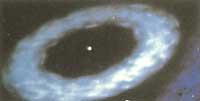
Along with the issue of cosmic ray energy, they began to work around the sources. Technical service 1949 Richtmeyer and Edwa-rd Teller proposed that they came from the sun and that the average energy was 3.10 4 eV, although depending on the intensity and strength of the eruption could reach 10 9 eV. However, when 10 16 eV were detected the theory of Richtmeyer and Teller staggered. It was therefore concluded that some stars were more abundant than the sun in the production of cosmic ray particles. For example, novas and supernovas.
According to the theory of novas and supernovas, some massive stars exploit and throw most of their mass into space with incredible speed and energy. However, this does not solve the energy problem of cosmic rays. If the Sun is capable of producing 10 9 eV energy particles, it is not surprising that a supernova or novel are capable of producing particles of higher energy, but not 10 16 eV.
Enrico Fermi in 1951 has another idea, in 1933 H. Similar to what Swarma did, she proposed. According to him, all the particles had no energy so great in their formation and nothing more produced accelerated the magnetic fields of the Galaxy, thus increasing their initial energy. According to their calculations, if in the case of our galaxy there were 10 17 eV of energy, they would have enough energy to leave the area.
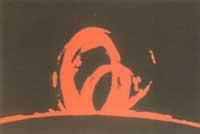
Meanwhile, when in 1957 Pietro Bassi and Bruno Rossi detected 5.10 18 eV, it was thought that it would be another source that produced a more energetic cosmic radiation in the universe. In other words, if our galaxy were the only source of cosmic rays, one could not expect an energy greater than 10 17 eV. However, in some cases higher energies have been detected, with a minimum of 10 to 19 eV. The only hypothesis that can be made is that these particles with enormous energy are produced in those that have a magnetic field greater than that of our galaxy. These galaxies explode, collapse or normally undergo much more catastrophic changes than conventional supernovae, which release huge amounts of energy and waves of true cosmic rays in a region of billions of eV.
These superenergetic particles, after being released from their mother galaxy, cross the interstellar space without colliding with some piece of materi, casually cross our galaxy and attack our planet.
In the 1960s, the producer of high-energy cosmic rays was discovered when pulnets were discovered. Pulsars are neutron stars that spin very fast and have a great spinning energy, so their magnetic field is very powerful, i.e. 10 12 gauss. D. Kulsrud, F. Gunn and W. According to calculations made by Ostriker, cosmic particles located around the pulse network can be accelerated up to 10 19 eV of energy.
In 1962, 10 20 eV was detected and it is currently considered to be more energy. According to experts, the cosmic radiation below 10 16 eV has been produced by sources located in our galaxy (novas, supernovas and pulsars), while those of greater energy come from X-rays, cuasars or magnetic stars, in which more violent phenomena occur.
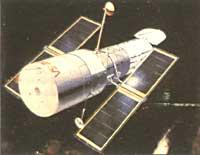
Researchers have not ceded and are currently designing a lot of attempts to combat the problem of cosmic particles. According to researchers from the Universities of Utah, Michigan and Chicago who work at the Dugway military center in the United States, the best cosmic ray observatory in the world is local, since its tools allow detecting energy cosmic rays of 10 20 eV. Each detector will have 67 mirrors and 880 photobiders and can detect the cosmic ray that can come from any direction.
Each mirror will collect and convert into electric pulse the weak light resulting from the clashes between the atmospheric nuclei and the cosmic particles. Depending on the intensity of the electrical pulses, a computer will form a jump of particles, being able to know the direction of entry to the atmosphere of the primary cosmic rays. In total they will use 36 detectors distributed in a circle of 100 m in diameter.
On the other hand, researchers at the University of Michigan will place another package of detectors in the subsoil to detect energy muons. According to Jim Cronin, director of this project, since the 1960s there has been no major attraction in cosmic ray research, except for some individual sessions, and it is time for proper serial research. According to Jim Croni, the results obtained at the Dugway observatory will provide solid scientific foundations on cosmic rays. So be it.
Buletina
Bidali zure helbide elektronikoa eta jaso asteroko buletina zure sarrera-ontzian











